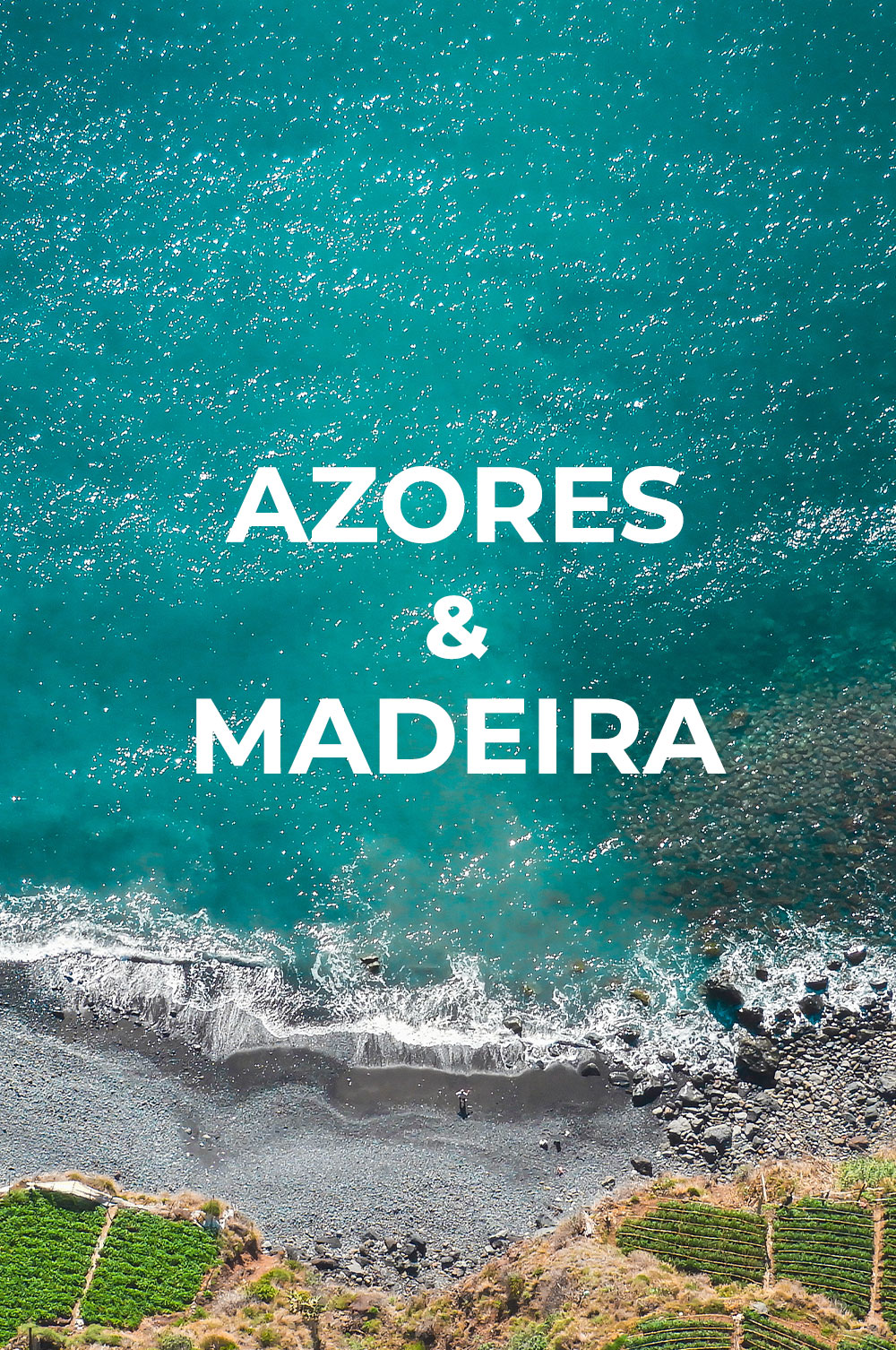
Every month, Vinha.pt dedicates a wine box to the different regions that make up the map of Portugal’s wine-producing regions. This month, discover the Portuguese islands of the Azores and Madeira.
The wines of the Azores and Madeira originate from vineyards planted in fertile volcanic soils. Manual harvesting, challenging due to the islands’ topography, is an ancient art performed with dedication and delicacy, reflecting centuries of acquired experience.
The nature of the soil and the profoundly maritime climate give them a unique identity, leading to the recognition they have deserved for many years.
Azores Wines:
The Azores archipelago, home to one of Portugal’s most impressive wine regions, consists of nine volcanic islands, three of which have vineyards (Terceira, Pico, and Graciosa). Located in the middle of the Atlantic Ocean, 1600 km west of the Portuguese mainland, it has a climate with mild temperatures, low thermal amplitude, high rainfall, and high relative humidity.
The Azores were discovered in the 15th century. According to some researchers, it was the Franciscan Friars who introduced grape cultivation, bringing the Verdelho grape (formerly Sicilian Verdecchio) from Sicily.
The growing conditions on these islands are harsh. The terrain is rugged, and the volcanic soil is difficult to work with; therefore, people carved cracks in the cooled lava, favoring the deposition of organic residues that would form the bed for young vines, and erected loose stone walls, known as “currais,” which still shelter the vines from salty winds and shape the Azorean landscape.
The wines that originate here are of exceptional quality and have gained well-deserved fame worldwide. In Russia, after the 1917 Revolution, bottles of Pico Verdelho Wine were found stored in the cellars of the former Russian czars; it was this historical curiosity that inspired the Czar – a premium and rare wine, the least known and most expensive of the Azores – elected the best Wine of the Year in 2023 by the wine magazine, Revista de Vinhos.
Madeira Wines:
It can be read on the website of the National Archive Torre do Tombo that “Tradition has it that the Portuguese arrived at the Island of Madeira on July 1, 1419. However, 1418 is the year pointed out as the discovery of the Island of Porto Santo, a circumstance that occurred after a storm diverted a ship that was sailing along the African coast. João Gonçalves Zarco and his crew were saved by this small piece of land which they named Porto Santo. A year later, in 1419, another island was reached, which was designated Madeira, due to the abundance of this raw material.”
It was also in the 15th century that Prince Henry introduced vine cultivation on the island, importing Malvasia vines from Greece, originating from Napoli di Malvasia, near Sparta. In a climate where summers are hot and humid and winters are mild, on sandy terrains of volcanic and basaltic soils, vineyards expanded, and the Madeiran landscape transformed.
The rugged relief topography promoted terraced agriculture, the “poios”; irrigation water in Madeira is collected in the high areas of the island and conveyed through channels called “levadas,” which integrate an impressive system of 2150 km of canals; the most traditional vineyard management system is the “latada” (pergola).
The fame of Madeira fortified wine can be attested by numerous episodes; from being referenced in literary works by Shakespeare to the fact that the celebration of the independence of the United States, in 1776, was celebrated with a toast with Madeira wine! George Washington and Thomas Jefferson, or Winston Churchill, are among its most famous admirers.
But Madeira wine is not the only excellent wine from the island. Recently, Madeiran table wines have gained prominence, driven by the regional government’s support for small producers and have captivated fans around the world.
Experience the wines of the Azores and Madeira, here.
Or in this Wine Box with our selection and which is priced lower per bottle.

